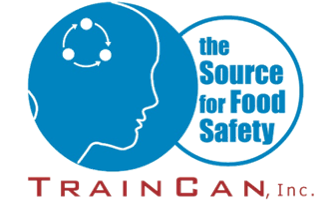'Bacteria will survive': Microbiologist offers tips on making this holiday season food-poisoning free
Article By Brittany Ekelund Published December 15, 2024
Article Source: Food safety tips for holiday meals from a microbiologist | CTV News
Food-borne illness – commonly known as food poisoning – is caused by eating food with germs on it.
Those germs can come from just about anywhere and be spread to just about anything – including your dinner guests.
With many people getting ready to welcome family and friends around the table, here are some tips on how to make holiday feasting as germ-free as possible.
According to the federal government, about four million Canadians get food poisoning(opens in a new tab) each year.
Symptoms of the most common culprits - norovirus, listeria, salmonella, E. coli and campylobacter – include diarrhea, vomiting and fever.
"If you buy this wonderful turkey for Christmas, you have a 20-per-cent chance of the turkey being contaminated with salmonella and a 40-per-cent chance of the turkey being contaminated with campylobacter," said Dr. Michael Gänzle, a professor of food microbiology at the University of Alberta.
Turkey, like all raw meat, poultry, eggs and fish, is one of most common sources of germs that cause food poisoning.
Veggies don't get an automatic bill of health either, as they can carry harmful microbes from contaminated water used to irrigate or wash them.
Even cooks themselves pose a risk, as E. coli and salmonella are carried in the human intestinal tract and staphylococcus lives on skin, and in the nose and throat.
But these risks can be easily mitigated, Gänzle explained, with good cooking hygiene.
That includes:
· always handling raw meat separately;
· using separate cutting boards and utensils for raw and ready-to-eat ingredients;
· washing hands with warm water and soap for 26 seconds after touching raw meat or eggs; and
· using a thermometer to ensure meats are cooked to appropriate temperatures.
"Many ovens come with a temperature probe that you can use to monitor whether the temperature has been reached. If the interior is at 71 C then all vegetative bacteria have been killed," Gänzle said.
"After the turkey is roasted, keep it hot until it's eaten and after the meal, make sure that it gets into the fridge within four hours."
Leftovers
Gänzle said food that's been packed away properly within four hours should last up to a week in your fridge.
However, cool things down too slow or leave them out too long, and you may be putting yourself at risk.
"Spores of bacteria will survive the cooking process. Some of them grow extremely fast," he explained.
"Longer than four hours is sufficient for a single spore hiding somewhere on the roast to grow to more than a million cells, which then can cause disease."
Alberta Health Services (AHS) said refrigerators should be kept at 4 C or lower (opens in a new tab), as bacteria multiply quickly in the "danger zone" between that and 60 C.
While reheating some dishes to 70 C is enough to kill any bacteria growing on yesterday's dinner, some plant-based foods like rice and pulses contain bacteria that creates heat-stable toxins that can still make you sick.
"If you buy rice, pulses, any plant material, it's extremely likely that this contains bacillus cereus," Gänzle said, adding staphylococcus aureus (from your nose or hands) also produces heat stable toxins.
"But refrigeration safely prevents growth of the organism."
That being said, don't rush to get those leftovers in the fridge – too many hot dishes can raise the inside temperature and put food inside in the danger zone.
AHS's best practices for packing up include transferring food out of deep dishes or pots into shallow containers.
Big pieces of meat can be cut smaller to store, and food should be left uncovered until it's cool.
An ice bath can help bring those big batches of Boxing Day turkey soup down to temp in a hurry, too.
AHS explains that food with harmful germs or toxins may look, taste and smell normal, so don't trust the sniff test.
To help know if your snack is safe, AHS recommends cooling food from 60 C to 20 C within two hours, and from 20 C to 4 C within four hours.
With files from CTV News Edmonton's Evan Kenny
